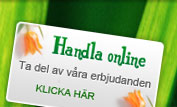http://gears.tucson.ars.ag.gov/book/chap7/gooseberry.html"Yeager (1935) stated that, "So far as we know, gooseberries are all self-fertile, hence cross-pollination is unnecessary and only one variety need be grown to get a crop of fruit." He apparently was not distinguishing between self-compatibility and the ability to self-pollinate. Colby (1926) also concluded, and apparently for the same reason, that gooseberries can bear fruit without the aid of insects. Robbins (1931) stated that insects are the chief agents of pollination. Auchter and Knapp (1937*) stated, "Practically all commercial varieties of currants and gooseberries are self-fruitful and thus no provision need be made for cross-pollination." Smith and Bradt (1967*) stated that gooseberries are self-fruitful and self-pollinating. However, Zakharov (1958) showed that the percentage of ripe berries, their weight and number of seeds per berry, on the average, was greater in those varieties where bees were working during bloom.
Philp (1933) stated that gooseberries and currants are self-fruitful, but they require insect application of the pollen from the anthers to the stigma. Offord et al. (1944) stated that seed production depended on insect pollinators, and the flowers of at least four species were self- sterile. (Of 736 self-pollinated flowers not a single mature fruit was obtained, but 621 cross-pollinated flowers within the species set 286 fruits.) They concluded that all seed-bearing fruit of the four species studied, Ribes roezlii Regel, R. nevadense Kellogg, R. viscosissimum Pursh, and R. glutinosum Benth. resulted from cross-pollination by insects. "The selfed flowers were pollinated by anthers from within the same protective bag."
Although the above test was performed on different species, there are no data to infer that self-sterility of the cultivated species would be different just because the plant will produce fruit. Apparently, Yeager (1935) and Auchter and Knapp (1937*) believed that because no fruit-set problem arose on isolated cultivars, they were self-fertilizing, when in reality they might have been dependent on insects to carry pollen from plant to plant or anther to stigma within the cultivar. Apparently, insects are of value to gooseberries for maximum set. "



